|
Lucy Howarth on
Marlow Moss, Piet Mondrian, Paris and Lamorna
e-interview Rupert White
Thanks to a number of photos taken later in her life, much has
been made of Moss' ambiguous sexual identity, so perhaps we should start
with this. How did the expression of that sexual identity change over time? What did family and friends call her, for example?
Existent photographs of Marlow Moss (and there are only a handful in
total) fall into two categories: ‘snaps’ that show her often smiling and
with friends, and the formally posed photographic portraits to which you
refer, that are pretty unambiguously queer.
The son of Moss’s lifelong
partner, Antoinette (Netty) Hendrika Nijhoff-Wind, took the portrait
photographs, and probably some of the snaps too. Stephen Storm, as he
was known, was a photographer and artist – trained under Man Ray. In
this remarkable series he presents his quasi-step-father as a dashing
protagonist: Moss is dapper and urbane, dressed in stylish masculine
attire, with a silk cravat to her neck, her short hair neatly
Brylcreemed and often a half-smoked cigarette in her hand. This is of
course a performance, and one Moss enjoyed; she is remembered as saying
“I destroyed my old personality and created a new one”.
Family called her Marjorie, or Aunt Marjorie. Neighbours in Lamorna,
Cornwall, where she lived from 1940 until her death in 1958, called her
‘Miss Moss’, as did the famous painter Piet Mondrian in letters to her.
She was professionally known as Marlow Moss, and signed her work this
way. Her friends called her Marlow.

Moss did not write anything at all, as far as I know, about her sexual
identity, so it is hard to know if it changed over time, or what she
thought about it at all. She lived her adult life openly as a lesbian –
and now is sometimes considered a trans-man – the discourse around this
has moved on considerably since the fifties. I have written about these
issues recently in an article for Art UK, and previously in a chapter
for the book 'Reflections on Female and Trans* Masculinities and Other
Queer Crossings'.
Moss was a member of the Women’s
International Art Club, and exhibited with them regularly in the
fifties, so clearly did not object to being considered a woman.[1]
It is likely she also didn’t mind being mistaken for a man, as she often
was by local children in the village, several reviews of her exhibitions
at the Hanover Gallery in London, and in 1942 by Alfred Barr, Director
of the Museum of Modern Art in New York, (on account of her name and
work, rather than an actual meeting).
Its been fascinating watching the Ithell Colquhoun revival of
recent years. Largely due to your efforts, Moss seems to be undergoing
something similar, and in fact one of her paintings has been used as the
poster for the most recent rehang at Tate St Ives (2021). How and why
has this happened, do you think?
Moss is a remarkable figure, and she produced a remarkable body of work,
so it was, to a certain extent, only a matter of time before she was
‘rediscovered’; in the UK we don’t have many artists who were as
important and active on the international stage. When I began my
research I made contact with the handful of scholars and artists who had
written or made work about her, and the collections that hold her work
(mainly in the Netherlands). I was very lucky and saw Moss works with
several galleries in London: Offer Waterman and Jonathan Clark and
others. I went to Lamorna and spoke to people around the village who
remembered Moss – that really made her feel real to me. I also spent
time in Walcheren, where the Nijhoff family home is. I felt the weight
of the responsibility of writing on a person, a neglected artist, who so
urgently needs reappraisal.
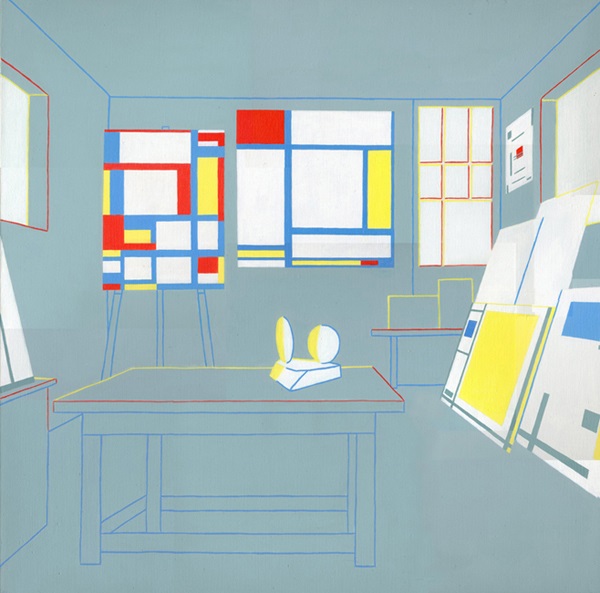
I approached Tate St Ives to propose an exhibition of the work of Marlow
Moss during my PhD research, in around 2006. The idea got off the ground
in 2012, and I developed the show with Tate St Ives curator Laura Smith
and Artistic Director Martin Clark – and also Chris Stephens who was
Lead Curator of Modern British Art at Tate Britain at the time. Along
with the display (photo below), I wrote a curator’s essay for the Tate website, an
article for the Tate magazine, and participated in several events and
study days, bringing together scholars, artists and interested people.
I had seen Moss’s work on the wall at Tate St Ives before, and of course
they hosted Florette Dijkstra’s installation on Moss back in 1997. I
know that Michael Tooby was always interested in Moss and supportive of
her elevation at Tate St Ives, as was Martin Rewcastle, when he was
Director of South West Arts. I met with his widow Jennifer, and she
shared his written account with me.
I remember approaching Alastair
Grieve after a lecture he gave at Tate St Ives, I think in 2005 on the
occasion of the publication of his fantastic book ‘Constructed Abstract
Art in England’, and enquiring why he didn’t include Moss, but of course
his main interest was the London Constructionists – an intimate group of
which Moss wasn’t part (although there was some contact in the Fifties).
It is often the case that Moss has ‘fallen-between-two-stools’ and been
left out: an English artist in Europe; a European in Cornwall; a female
artist amongst men; a masculine figure amongst women.
Tate_06_small.jpg)
I was thrilled to see that Tate have used a Moss painting as their
poster image for the current display ‘Modern Art and St Ives’. Things
have definitely moved on since 1980s Tate Director Alan Bowness
expressed the opinion to artist Michael Canney that Moss’s works in the
collection would remain forever in the vault! Bowness was of course the
son-in-law of Ben Nicholson and Barbara Hepworth, so make of that what
you will. Its hard to feel this snub wasn’t reflecting a certain agenda.
Now of course Moss is celebrated in many exhibitions internationally –
her work is currently included in the expo 'Elles font L'abstraction' at
the Pompidou Centre in Paris until the end of August 2021.
How did you, personally, become interested in Moss and how easy
has it been to piece together her story? What kind of archival materials
are available?
It is very much an on-going project. I completed my PhD in 2008, but my
investigation is still active now – I am often approached when works
come up at auction, or when an exhibition or project is being planned –
I am fortunate to have been able to contribute to academic events and
various creative endeavours. Artists (including musicians and
choreographers) are always attracted to Moss and there are many
interesting works made in response to her oeuvre – examples being
projects by Andrew Bick, and also the album of electronic music by
Primitive World, and there is also much continuing interest in the
Netherlands.
After the Tate display that toured from
Tate St Ives to the Jerwood Gallery in Hastings (now Hastings
Contemporary), Leeds Art Gallery and Tate Britain 2013-2015 (photo
below), I co-curated
a more extensive exhibition at Museum Haus Konstruktiv in Zürich, in
2017 (photo below). On the occasion of which a book was produced entitled
'Marlow Moss: A Forgotten Maverick', by Hatje-Cantz.

I first heard of ‘Marlow Moss: the female British Mondrian’ at the
University of Plymouth, when I was on a teaching placement there – I
overheard Sam Smiles, who became my PhD supervisor, talking about her,
and was intrigued. My research began with the work of Florette Dijkstra
– her ‘Marlow Moss Reconstructieproject’ and the accompanying books that
she made in the 1990s. Florette was incredibly generous to me with her
materials, and I try to pass this on by always responding to students who
write to me about Moss – that way the discourse around Moss continues to
grow.
There is archival material available, in the UK in the Tate Archives. The letters between Moss and her friend the artist Paule Vézelay are all
catalogued and more easily accessible now, and there are exhibition
catalogues and photographs of works. However, a lot of material remains
in private collections – some photographs and letters I only know
through digital reproduction, and certainly things are yet to come to
light. I’m always very grateful when a scholar contacts me to draw my
attention to a mention in a letter, or other reference to Moss that I
have not found. She was very well-connected with the European
constructivist art scene, so things pop up every-so-often. There are
letters between Moss and Georges Vantongerloo, held at Haus Bill,
Zumikon, Switzerland; the Mondrian Edition Project by the RKD and
Huygens Institute in the Netherlands has unearthed some interesting
accounts that include Moss. The Women's Art Library Collections at
Goldsmith’s has much pertinent material.
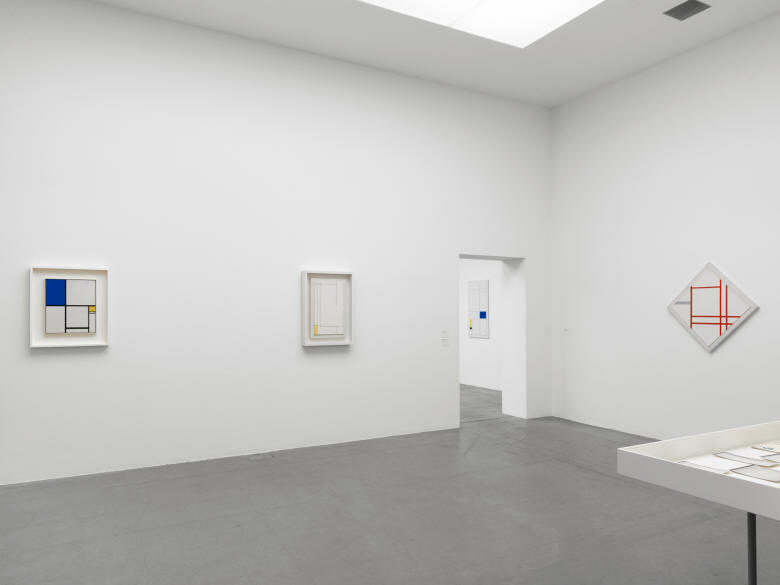
Do we know much about Moss's childhood and early life?
Most of what is known about Moss’s childhood comes from an account
written by her partner Nijhoff, in Dutch, published in the 1962
Stedelijk Museum exhibition catalogue of the posthumous retrospective of
Moss that followed that of Mondrian. I have also been in touch over the
years with descendants of the Moss family. Recently a photograph has
been found of Moss and her sisters (photo below). Marjorie, as she was
then called, is at the front left.
She was the second youngest. The sibling age
order is: Gladys, Lillian, Marjorie (Marlow), and
Gwendoline. I, as one of four sisters myself, find this image
incredibly touching!
Moss was born 29th May 1889 in Kilburn, northwest London to a
middle-class couple, Lionel Moss, a Jewish hosier clothier, and his wife
Fannie. Her birth date has often been recorded incorrectly as 1890, and
the place of birth as Richmond – which is where she grew up, in the
household of her uncle, following her father’s death from
tuberculosis in 1897. The four girls were accomplished young ladies,
with piano and ballet lessons. Moss excelled at these pursuits, but her
artistic ambitions were thwarted by tuberculosis, and long periods of
convalescence.
John Jacobs, her
uncle, was the founder of a shipping company, described as “a
bachelor, big businessman, and domineering personality” and “head of the
family”. He had not un-common views of a woman’s role in society,
inasmuch as he supported his young ward’s interests in the arts, but
only if they remained on an amateur footing.
Moss’s childhood ill-health led to a long period of idleness (possibly
this would now be termed depression) that lasted well into her twenties.
Jacobs, the patriarch, exercised some control over his household, his
two younger sisters Rosetta the spinster and Fannie the widow, and in
turn over his four nieces. Marjorie was eventually allowed to attend St.
John’s Wood School of Art, but not until just before Uncle Joe’s death
in 1917 when she was aged 27. Moss and her sisters were all
beneficiaries of his fortune.
In lots of ways Moss’s was a privileged childhood, but it was also
something she felt she needed to break from – the life she eventually
chose for herself was quite different. She always had the love and
support of her sisters though, especially Wendy, the youngest.
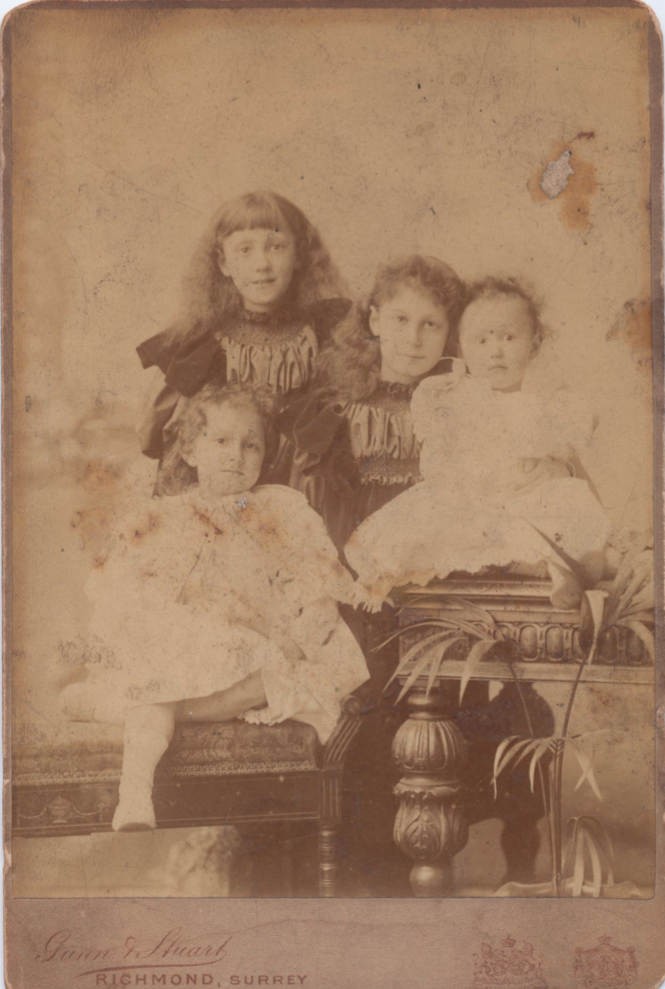
She left the Slade in 1919, so would have been relatively old
(30). Which year did she go to Paris? Where did she live and who were
her closest contacts?
Moss’s time at art school in London wasn’t successful, and led to a
period of ‘emotional breakdown’ and maybe, again, depression. She spent
time in Cornwall, and in London, and eventually was finally recovered.
In 1927 she made a short trip to Paris, and decided to move there
permanently, which she did later the same year. It was at this time she
first encountered the work of Mondrian, and through her new friend and
partner Netty Nijhoff, became acquainted with him and then part of his
circle of intellectuals and avant-garde artists. Moss makes small
appearances in writings on Mondrian:
… one of his own pupils, a young English
woman, was a colourful figure among the dubious clientele of the
Montparnasse cabarets. Flanked by an excessively corpulent Dutch woman,
she went about, summer and winter, dressed as a jockey… [2]
Other than Nijhoff and Mondrian, Moss’s most important friendships in
Paris were with the artists Jean Gorin and Georges Vantongerloo (and
their wives Suzanne and Poema respectively), and the Swiss
artist/designer Max Bill. It was these people that Moss remained in
contact with long after. There is no record of any meeting between Moss
and Constantin Brancusi, but he is a clear influence upon the sculpture
of her later years, and she may have met him in Paris. Jean Arp and
Sophie Taeuber-Arp again may have been personally acquainted with Moss
in Paris, and Arp’s work was certainly an influence on Moss’s later
sculptures and drawings. Arp was an admirer of Moss’s work in return,
and bought a painting of hers in the fifties. Moss did once briefly meet Barbara Hepworth in Paris, but not Ben
Nicholson.
By 1929 Moss, now aged 40, was a fully-fledged Parisian constructivist
artist. Her first composition was simple, consisting of two black lines
intersecting at right angles on a white ground. Moss apparently did not
discuss Mondrian’s working method for neoplasticist painting with him,
instead she developed her own technique. In 1934 Moss lived on Rue
Méchain, and the following year she moved to the leafy Boulevard Raspail,
an apartment in a brand new modernist-style building. Both these
addresses are just a short walk across Montparnasse from the location of
Mondrian’s studio at Rue du Départ. Moss was one of the first residents
at Boulevard Raspail, and must have enjoyed the building’s glamorous
modern appearance – like a neoplastic composition, it is white,
articulated with black horizontal and vertical window frames.
Despite the fundamental oppositions between constructivist art and
surrealism, the two modern movements amicably co-existed, and sometimes
even integrated, in inter-war Paris. According to Nijhoff’s account,
Moss, along with several of the membership of 'Abstraction-Création'
including Mondrian, Arp, Naum Gabo, László Moholy-Nagy, Theo van
Doesburg and Kurt Schwitters together organised a surrealist event in
1932. There is seemingly some confusion, or misremembering on the part
of Nijhoff (ever the story-teller – she was a novelist afterall), with
regards to this event, as van Doesburg had died in 1931 (but maybe he
was included posthumously), and the exhibits that she describes,
actually appear at the 1938 'Exposition Internationale du Surréalisme', at
Galerie Beaux Arts.
Vantongerloo, a senior figure of Abstraction-Création, became a
particular friend to Moss, and many years later tried to organise an
exhibition in New York. The earliest letters that exist between the two
are formal, and mainly focussed on business related to the day-to-day
running of the group; he asks for her vote on administrative matters,
and invites her to take part in exhibitions. By 1936 they were certainly
friends, and Moss sent him and Poema postcards from her holiday with
Nijhoff in Greece.
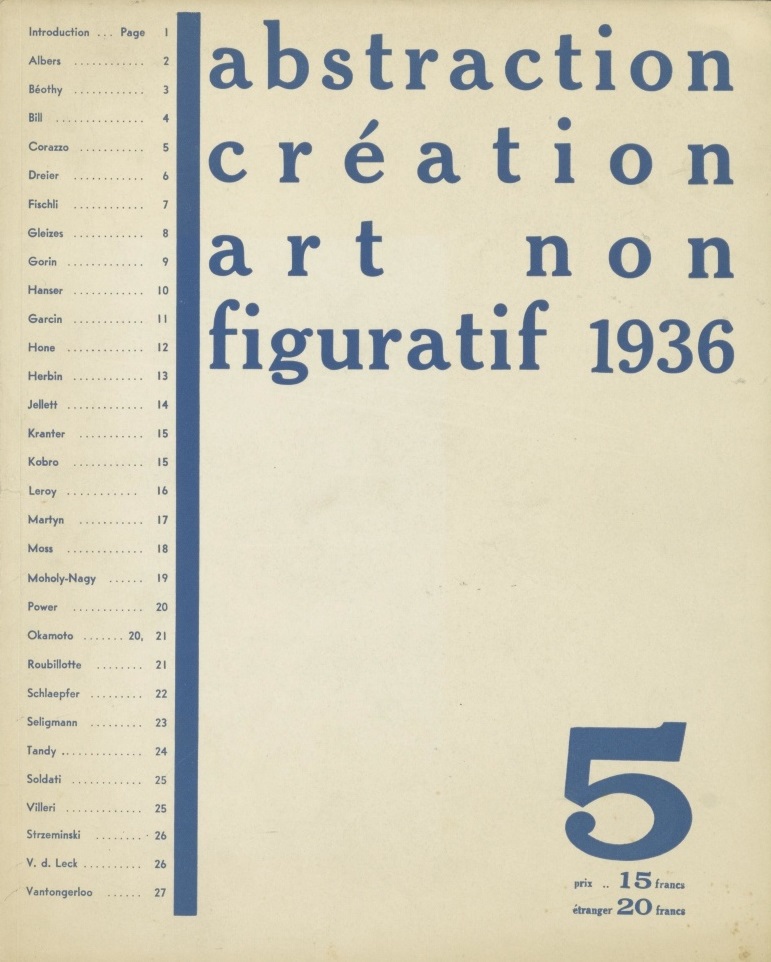
What about Piet Mondrian? What
kind of relationship did they have, and to what extent was any influence
a two-way thing?
Almost as soon as Moss started making work in the neoplastic idiom, she
made departures from Mondrian’s language, most significantly the
so-called double-line (I have written about this motif extensively in
both the Hatje Cantz book and my book with Eiderdown), but also the use
of coloured lines, and elongated vertical canvases, and then eventually
with collaged materials, relief and sculpture. Moss’s approach, based as
it was on mathematical patterns and geometry, was very different from
Mondrian’s, which was intuitive and symbolic. Mondrian was in the
peculiar position of simultaneously denying the role of personal
expression in art, and developing a highly strict personal set of rules
for neoplasticism; for example, he had adopted the practice of having at
least one vertical and one horizontal line going right across the
canvas; Moss broke this rule in two compositions of 1931 (illustrated in
the first issue of Abstraction-Création: Art Non-Figuratif) with no
transverse horizontals.
Mondrian intended neoplasticism to be a
universal art, and to remain unchanged by individual styles. To accept
other artists’ modifications to the language would be to acknowledge the
presence of his own personality in neoplasticism initially. His curious
new apprentice brought this conundrum to light, and this caused Mondrian
some considerable difficulty.
That's fascinating. Can you say more
about the double-line, and why it is significant?
Moss first exhibited works featuring the
double-line at the second Association 1940 show at the Salon des Surindépendants in Paris, in 1931. This occasion signalled her arrival
as a mature artist and contributor to the constructivist movement, and
was her succès de scandale in that it is because of it that she has
always remained visible in writing on Mondrian (was he or was he not
influenced by her?). The significance of the double-line in the work of
Moss has perhaps therefore been over-emphasised, but at this point in
1931, it was important to Moss as it brought her to the attention of
Mondrian, Gorin and Vantongerloo. That year, on the suggestion of
Mondrian, she was invited by Vantongerloo to be a founding member of the
non-figurative art group Abstraction-Création.
Throughout the thirties Moss exhibited regularly with 'Association 1940',
with the 'Association Artistique: Les Surindépendants' at the Parc des
Expositions, Porte de Versailles, and later with 'Les Salon des Réalités
Nouvelles', and with the 'Groupe Anglo-Americain'. She was also included
alongside her Parisian colleagues, in the seminal exhibitions of the
European constructivist art movement: the 1937 'Konstruktivisten' at the
Kunsthalle in Basel, and the 1938 'Tentoonstelling Abstracte Kunst' at the
Stedelijk Museum, Amsterdam.
Moss’s friendship with Mondrian is interesting – she certainly regarded
him as her guiding light aesthetically, and remained fiercely loyal to
him (in 1955 she wrote to The Times to express her outrage that a
journalist had not been sufficiently effusive in his description of
Mondrian as merely “a great exponent of Non-Figurative Art”; she saw
Mondrian as simply “the greatest of all the Abstract Painters” – long
after his death in 1944). He, in turn, came to respect Moss as an
artist, and rely on her as a friend – when the war broke out Mondrian
travelled first to London and then to New York, and in a letter, urged
Moss to join him. Nijhoff described them as a “pair of lone wolves”.
Just like Hepworth and Nicholson in St Ives, Moss came to Cornwall at the
outbreak of WW2. But you mentioned that she had stayed here before then.
Do we know much more about these other stays?
Moss returned to Cornwall again and again throughout her life; it was
her sanctuary in a way.
She spent time in Cornwall after the
emotional breakdowns of her youth, and probably also as a child
convalescent – the 1949 novel by Nijhoff, 'Twee Meisjes En Ik' revolves
around this theme, and the character ‘Juan’ is certainly an equivalent
for a child-Moss, recovering from an injury in Cornwall. Eventually Moss
settled in Lamorna for the culminating period of her career as an
artist.

Though they lived quite near one another, Hepworth and Nicholson seem to have had very
little contact with Moss. Given their shared interest in Mondrian, abstract art
and Constructivism, this is very odd. How do you explain it?
I discuss the lack of contact between Moss and the ‘St Ives artists’
Nicholson and Hepworth in my Eiderdown book; suffice to say Moss wrote
to Nicholson upon her arrival in Cornwall, hoping to have a professional
comrade, and he did not respond. He did however keep her letters – they
are held in the Tate Archives.
In later years Moss exhibited once or
twice with the Penwith Society, where they all must have met eventually.
I am very much alone in my ideas here. I have seen Ben Nicholson just
once, things aren’t going well between us, I don’t even know why, so I
never see him.[3]
Who was she in touch with? What kind of relationship did she have
with other Lamorna modernists like John Tunnard, John Armstrong, Ithell
Colquhoun and Gluck? I think she showed at the Arra Gallery in Mousehole
with Colquhoun, for example.
Moss did know Colquhoun – but I am not sure that they could be described
as friends; their descriptions of each other are slightly askance! I
have no record of any contact between Moss and Tunnard or Armstrong, but
they too must have known each other – Lamorna is not a big place. Moss
might have known Armstrong already, from St John’s Wood School of Art –
and may have had contact with Tunnard at Penzance School of Art, as well
as being his neighbour, she did attend there to study occasionally. Moss
also knew Gluck, who came and went from Lamorna as Moss did, and had
attended ‘The Wood’ and The Slade too, like Moss. Gluck took over Moss’s
bungalow as a studio after Moss died of cancer in 1958.
Moss was friends with the impressionist painter Stanley Gardiner in
Lamorna, and initially shared his studio with him, before she
established her own. Younger artists in Cornwall became interested in
Moss and her work: Wilhelmina Barns-Graham, Brian Wall, Michael Seward
Snow and Michael Canney all tried to seek her out, as she had become
something of a phenomenon, and seemed rather elusive to them. Snow was
recommended to introduce himself to Moss by Herbert Read – but I don’t
know if Read knew Moss himself. Moss exhibited a few times at the Arra
Gallery in Mousehole, and was friends with Ruth Adams whom it was named
for – the little catalogues, preserved by Colqhoun, are kept in the Tate
Archives.
A charming description of Moss is provided in the small publication
'Some Lamorna Voices', and gives us some idea how she was perceived by
locals:
She was a little lady. Always dressed with jodhpurs and little brown
sort-of elastic-sided boots. ... I never saw her in a skirt... She had a
very close-cut hairstyle, what we used to call an Eton Crop... We who
knew her in the valley – everyone loved her – she was so kind to the
children. … She had a very husky voice - she'd say '... can I have some
of my Cool Tips please'. She was a dear little soul. She worked in what
had been the carpenter's shop… we would peep in the window, we'd see her
pacing up and down, pacing, pacing. And then she would draw a straight
line. Her work was all straight lines and cubes. Then she'd pace up and
down again and then - uh, a square would be drawn...[4]
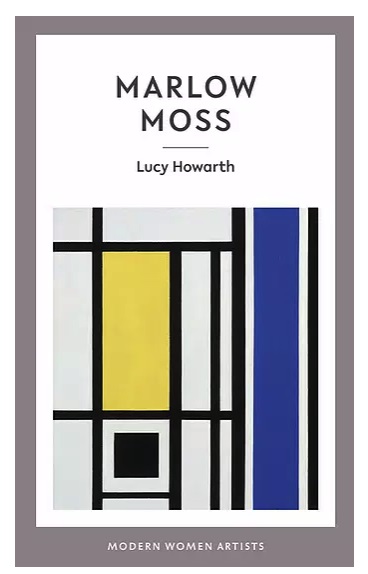
Are you expecting more materials relating to Moss's life to become
unearthed? Is there a chance that there is more hidden away in an attic
in Cornwall somewhere?
Yes! There’s every chance! Works have resurfaced over the years – but
many are lost or destroyed. There is still much for me to discover in
Cornwall – I know, for example, that a local shipyard helped to make
some of Moss’s sculptures, but I’ve never been able to trace exactly
which company or individuals were involved – do get in touch if you have
any insights!
[1] Many thanks to Una Richmond, who is currently
preparing her PhD thesis on the WIAC at the University of Sussex, for
this information.
[2] Frank Elgar, Mondrian, London: Thames and Hudson, 1968, pp.57-58.
[3] Letter from Moss to Vantongerloo, undated [1944], held in the
Vantongerloo Archive, Haus Bill, Zumikon.
[4] Hazel Hockin, Some Lamorna Voices, Lamorna: The Lamorna Oral History
Group, 2000, p.18, provided to me by Pam Lomax, Lamorna Archivist.
Images (top to bottom):
Marlow Moss standing by Lamorna sign, c1950, photographer unknown,
private collection, The Netherlands.
Florette Dijkstra, Het atelier van Marlow Moss in Lamorna, acrylic on
linen, 90 x 90 cm, 1994.
Tate St Ives Summer Exhibition display: Marlow Moss, 2013:
installation view of Marlow Moss artworks, photograph: Tate, St Ives,
2013.
Tate Britain, BP Spotlight Display: Marlow Moss, 2015:
installation view of Marlow Moss artworks, photograph: Tate, London,
2015.
Museum Haus Konstruktiv exhibition: Marlow Moss a Forgotten Maverick,
2017: installation view of Marlow Moss artworks, photograph: Museum
Haus Konstruktiv, Zürich, 2017.
The Four Moss Sisters: Gladys, Marjorie, Lillian and Gwendoline, in
Richmond, Surrey, c.1895, collection of Julia Rank
Front cover of Abstraction-Création
#5 (1936)
Still from Museum Haus Konstruktiv video of the exhibition in Zürich, in
2017, available online; Lucy Howarth speaking in front of the work by
Marlow Moss: Untitled, 1932, oil on canvas, 45 x 36 cm, Fondazione
Marguerite Arp, Locarno.
Front cover of Lucy Howarth's, Marlow Moss, ‘Modern Women Artists’, Chichester: Eiderdown
Books, 2019.
Dr Lucy Howarth is an independent
scholar and curator, working on British modernism and with contemporary
artists. Lucy’s book Marlow Moss, published by Eiderdown Books, is
available to order:
https://www.eiderdownbooks.com/product-page/marlow-moss-by-lucy-howarth
26/06/2021
|



Tate_06_small.jpg)





